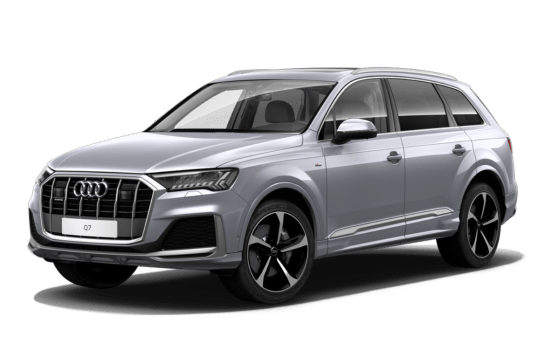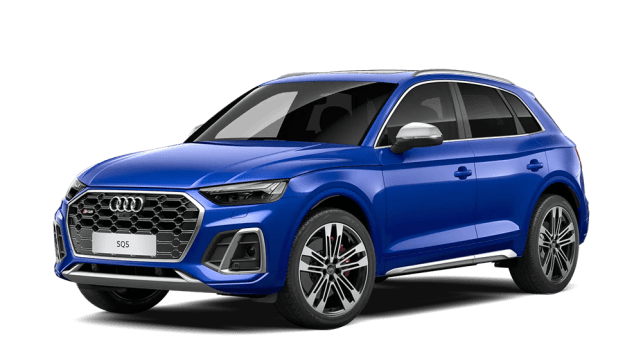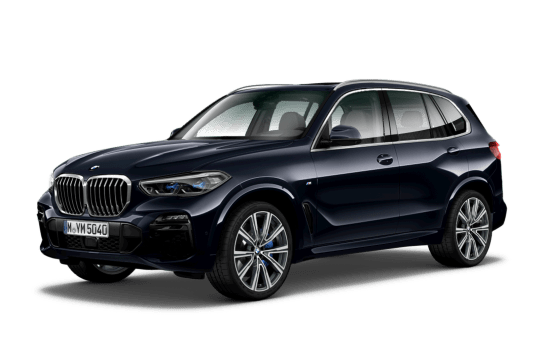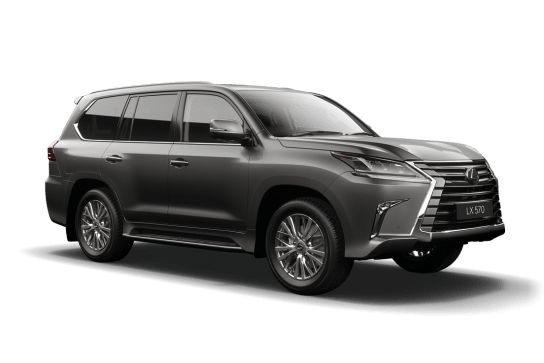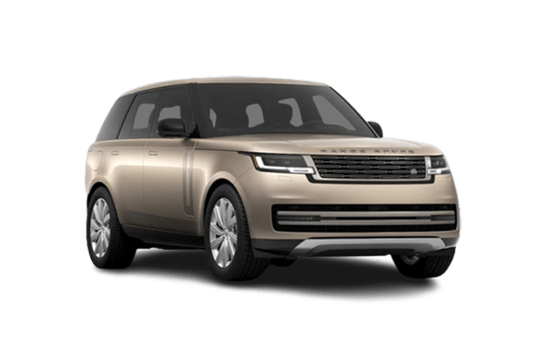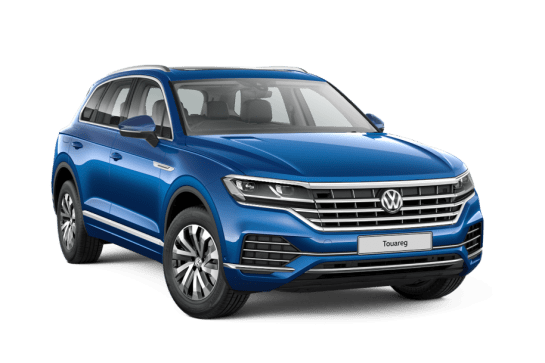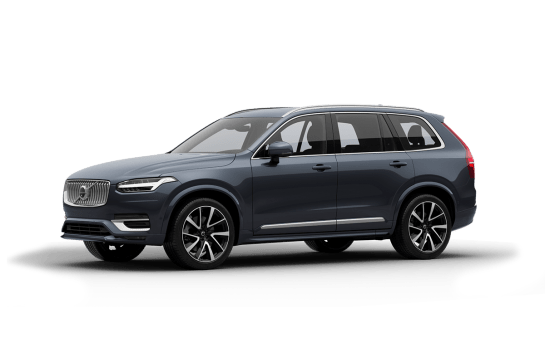
Porsche Cayenne VS Range Rover
Porsche Cayenne
Likes
- Colossal power and torque
- Comfortable and easy to drive family SUV
- Practical and spacious
Dislikes
- Four-seater only
- Gear shifter position
- Short warranty
Range Rover
Likes
- Good hybrid integration
- Still very Range Rover
- Smaller engine up to task
Dislikes
- Doubts around 51km range
- Loss of boot space
- No spare of any kind
Summary
Porsche Cayenne
The Porsche Cayenne Turbo GT needs a better name. This is the king of Cayennes and quite possibly the ruler of all super SUVs.
Well, the Cayenne Turbo GT is the fastest SUV around the Nurburgring Nordschleife. Not just that, it has such colossal power and torque it'll be side-by-side with a Porsche 911 GT3 RS in a sprint from 0-100km/h. No, a better name for this SUV would be the Cayenne GT3.
Which is perfect for me because I'm at the point in my life where although I love full-on and noisy cars I also have a full-on and noisy family.
Read more about
- "Who would have thought Porsche would go electric?" Porsche boss hails Taycan's "overwhelming success"
- Porsche doesn't need support from Volkswagen or other sports car brands on eFuels - but Lamborghini, Bentley and more could all benefit from it in the end
- When is the new Porsche Cayenne electric car coming? Timing confirmed for new BMW iX, Kia EV6 rival, and more details on new larger electric SUV revealed!
We lived with the Cayenne Turbo GT for a week to find out if this super SUV was also a super family car - from practicality to safety.
We're also a family with ridiculously high expectations of luxury SUVs having lived with and tested each of the Cayenne Turbo GT's rivals - from the Lamborghini Urus and Bentley Bentayga to the Aston Martin DBX and Alfa Romeo Stelvio Quadrifoglio.
| Safety rating | — |
|---|---|
| Engine Type | 4.0L turbo |
| Fuel Type | — |
| Fuel Efficiency | 12.5L/100km |
| Seating | 5 seats |
Range Rover
As part of the Jaguar Land Rover family, Range Rover will be part of the group's push into an electrified future from 2020 - and it's already had some practice, albeit not very successfully.
The brand new PHEV 400e, though, already looks better than its previous efforts. With up to 51km of pure electric range claimed, is this the Rangie for a new age?
| Safety rating | |
|---|---|
| Engine Type | 4.4L turbo |
| Fuel Type | Diesel |
| Fuel Efficiency | 8.4L/100km |
| Seating | 5 seats |
Verdict
Porsche Cayenne8.1/10
Of all the super SUVs I've piloted, the Porsche Cayenne Turbo GT is the best all-rounder in terms of performance, comfort, cabin technology and style.
As a family car it's roomy, practical and easy to use and drive daily.
As a performance car the Turbo GT is stupidly quick, with the agility of a sports car. Sure, a 911 would leave it behind on a twisty race track, but this SUV is close to having that sportscar experience and keeping your family, as well.
Range Rover7.3/10
Our testing was far too brief to give a considered opinion of the PHEV's capabilities, particularly when it comes to the claimed 51km range of the car under battery power alone. We'll need to drive it locally, and with a juiced battery, to rate its abilities properly.
In terms of it having the chops to be a proper, luxurious Range Rover, it's possible to say that yes, that box has been ticked. Even with a smaller engine, the Range Rover (as tested) passed muster for ride, quiet running and comfort.
Is a petrol-electric hybrid your kind of Range Rover? Tell us in the comments section below.
Design
Porsche Cayenne
This might be a personal thing but to me nearly all Porsches look better from the back than the front.
It's the wide stance and powerful haunches, the hunkered down suction-capped-to-the-road look that does it for me and the Cayenne Turbo GT, despite being an SUV, passes this important Porsche checklist item.
The GT aero kit only serves to make this SUV look more of a beast, and the gold-bronze looking satin Neodyne wheels are a Porsche theme that I've not always been a fan of, but I get the historic connection.
If only the Turbo GT could look a little less like other Cayennes from the front. This is the king of the SUV range and despite the apron and bumper already being exclusive to this model, there should be more.
Vents in the wheel arches, carbon bonnet with nostrils GT3-style perhaps? Or is that going too far? If you do want something more lairy then there's always the Urus.
The Cayenne Turbo GT's cabin is stunning in its plushness and modern surprises such as the passenger display, the hoodless instrument digital cluster, the lashings of Race-Tex upholstery everywhere. It's perfectly Porsche. High-performance meets high-end.
It's also highly practical. Let's talk about that.
Range Rover
The Range Rover Sport is the smaller sibling of the Rangie, but both share the same DNA if not the same body panels.
Both shapes remain pretty faithful to the original Range Rover that first surfaced in the 1980s, with its distinctive floating roof, angular rear aspect and bluff nose, though features like the vertical door handles – and indeed the two-door design – of the original are long gone. Both present bluff, vaguely masculine visages, with large glasshouses accentuating their relative sizes.
Inside, both cars are spacious and airy, thanks to that big glasshouse, while the luxury quotient of both is high, thanks to highly refined surface areas and touch points.
About the only let down is the new dual multimedia screen's propensity to show both finger marks and glare, though adjusting the angle of the lower screen does reduce the latter.
Practicality
Porsche Cayenne
The Porsche Cayenne Turbo GT only makes one compromise on practicality and that's the removal of the middle seat in the back, which, with just two kids isn't used all the time but on average we might need it once a week for school mates and cousins.
Instead of a middle seat there is a shallow tray, which will fit a phone or in our case leaves and rocks found at the park.
So, yes, the Turbo GT is a four-seater only, but this is a spacious, large SUV with good head and legroom, wide-opening doors for easy entry and exit, and air suspension which can raise and lower the height for easy access.
Storage is excellent with enormous door pockets in the front and back and there are four cupholders.
There's a wireless phone charger in the front and two USB-C ports as well, plus two USB-C sockets in the back.
Four-zone climate control means the kids in the back can set their own temperatures. They also have heated seats.
I was disappointed to see there aren't sunshades for the rear windows - pretty vital in Australia where it feels like we're only about 50 metres away from the sun.
The Turbo GT's 576-litre boot just managed to fit our pram and a week's shopping, which is our minimum standard for living. Any more space is a bonus.
Range Rover
Both PHEVs are five-seat propositions only, with additional features set aside for rear seaters including climate controls and vents, loads of connectivity points, touch LED courtesy lights and a comprehensive middle armrest that offers storage and two cupholders.
ISOFIX points are mounted to the outside seats, bottles can be slotted in the doors, and both heating and massage functions can be optioned, along with headrest mounted control tablets.
Front seaters are equally cossetted, with heating, venting and massage seats available via the options list, along with a new, deeper centre console bin, a pair of cupholders and small bottle holders in each of the doors.
One of the big omissions on the hybrid car is any form of spare wheel, thanks to the battery array under the boot floor. A sealant kit and compressor is included, but if the hole is big enough, it won't help.
How do we know? A double flat down the right side of a test car rendered it a lame duck, thanks to large tears in the sidewall of one tyre.
The rear storage area loses 98 litres of space to the regular cars, too, with 802 litres available behind the rear seats, thanks to the load space floor height increasing by 46mm.
Price and features
Porsche Cayenne
The Turbo GT is the king of Cayennes, so it shouldn't surprise anybody that it's also the most expensive with its list price of $364,700.
Lamborghini's Urus lists for $409,744 and is the Cayenne Turbo GT's not-so-subtle Italian cousin, sharing the same platform and engine.
Both are in my mind the best performance SUVs on the planet. It just depends how conspicuous you want to be.
Then there's Bentley's V8 Bentayga which isn't blessed with the Porsche's good looks but would still be all over the Cayenne if the two happened to meet at a race track.
So, why is the GT Turbo the king of the Cayennes? What makes it better? For all the reasons you'd think - it's the fastest, most powerful, most luxurious and most equipped Cayenne in the range.
We'll get into mind-bending engine and performance specs soon, but first let me take you through the standard features on a car that's anything but standard.
Coming standard and exclusively to the Turbo GT are 22-inch 'GT Design' wheels in satin 'Neodyne' with full-colour Porsche centre caps, an active rear spoiler, Turbo GT front apron, dual titanium exhaust, rear apron with diffuser, 'SportDesign' side skirts, wheel arch extensions, a lightweight carbon roof and tinted LED HD-matrix headlights.
Inside, and also exclusive to this grade, is the 'GT Interior Package' with 'Race-Tex' upholstery throughout with 'Deep Sea Blue' stitching on the front seats and centre console and the armrests and dashboard.
There's also the 'Carbon Interior Package' which includes dashboard and door trim elements.
Race-Tex trim is applied to the 'GT Sports' steering wheel, roof lining and gearshift, too.
The adaptive active air suspension, which can lower the car by 15mm, is standard and only available on the Turbo GT, too.
The soft-close doors are standard (a cost option on lower grades), as are the stainless steel pedal covers.
The rest of the features are also found on lower grades and include the 12.65-inch digital instrument cluster, head-up display, proximity unlocking, 12.3-inch multimedia touchscreen with sat nav, wireless Apple CarPlay and Android Auto, digital radio, a 10-speaker Bose sound system, heated front seats, rear privacy glass and an auto tailgate.
Four-zone climate control is standard on the GT Turbo, too, and so are heated rear seats.
Our car had several options fitted such as the front passenger display ($2860) and the Deep Sea Blue Accent Package.
The passenger display is a crowd pleaser, but as a family car my kids felt like they were missing screens in the back seats, too. Well, in my day...
Range Rover
To start off, Range Rover Australia will only offer the PHEV drivetrain in two variants; the Range Rover Vogue PHEV 400e will cost around $210,000, while the smaller Range Rover Sport HSE PHEV 400e will start at around $146,000.
Both models will share the same drivetrain, which uses a turbocharged 2.0-litre petrol engine and an 85kW electric motor to output 297kW/640Nm in total. Both cars are all-wheel drive, and have eight-speed autos as the only transmission option.
The Range Rover is the second most expensive variant in the four-engine line-up, only $1000 cheaper than the top-spec V8. The Sport, meanwhile, is about $3800 under the top spec HSE, and $12,000 dearer than the base six-cylinder powered version.
The pair makes up part of Range Rover's MY18 updated line-up, and both will score a new front bumper and grille, as well as new matrix LED headlights that can dim individual diodes to prevent blinding oncoming traffic. The rear bar has been lightly tweaked, too.
Inside, the pair come with the same dual multimedia screen system that launched with the Range Rover Velar, along with other small tweaks to interior finishes.\
As you'd expect, the Rangies are pretty well equipped, given their price point, with automated lights and wipers, leather interior, up to 17 (!) USB and 12v ports, heated and vented seats, sat nav, DAB+ digital radio, a Wi-Fi hot spot, a heated steering wheel, digital TV and Bluetooth streaming.
They both come with AEB as standard, but other driver aids like blind spot monitoring and adaptive cruise control are buried within the extensive options lists.
Under the bonnet
Porsche Cayenne
As a middle-aged parent with two children, a Porsche that I don't have to crawl into and out of like a cubby house is a great thing.
What's even better is that this ‘easy access' Porsche is every bit as brutally powerful and fast as the quintessentially ‘pure' Porsche, the 911. Actually, it's more powerful and faster.
The Turbo GT's twin-turbo 4.0-litre V8 petrol engine makes 485kW and 850Nm with drive going through an eight-speed transmission to all four wheels.
In comparison, a Porsche 911 GT3 RS, arguably the most brutal and anti-social 911, has 386kW/485Nm.
I haven't made a mistake. Those are the real numbers. And it's only when you step on the accelerator in the Cayenne Turbo GT, and it feels like somebody's sat down on your chest, that you realise what a big deal this is.
That is such a colossal amount of oomph that this 2.2-tonne family SUV can accelerate from 0-100km/h in 3.3 seconds.
The 911 GT3 RS can do it in 3.2 and it has a roll cage and a fixed rear wing the size of a bedroom door.
And yes, we're now coming into a digital age where Teslas and other electric SUVs are quick, too, but can they go around corners like a Porsche Cayenne Turbo GT?
Do they have the same rumble and roar as a twin-turbo V8 that's terrifying and enticing at the same time.
The correct answer is, absolutely not.
Range Rover
Parent company Jaguar has supplied its top spec Ingenium 221kW 2.0-litre four-cylinder turbocharged engine, eight-speed auto and proper 4x4 drivetrain for the PHEV, matching it with an 85kW electric motor, 13.1kW/h battery array, transformer and inverter, as well as a charging plug under the front grille.
Combined outputs equal 297kW/640Nm.
Efficiency
Porsche Cayenne
Seriously? This is a 2.0-tonne twin-turbo petrol V8 with a 90-litre fuel tank. Even the Porsche specs sheet doesn't understand the question because in the column for fuel efficiency there are three letters - tbc.
My own testing saw me record 22.5 L/100km at the fuel pump, which means I enjoyed driving the car very much.
A little digging around reveals Porsche globally claims the Turbo GT will use 12.6L/100km, over a combination of open and urban roads.
You might not have as much fun as I did but easing back a little might get you closer to the 700km of range this more frugal consumption figure appears to offer.
While efficient it isn't, I'm not going to mark the Turbo GT too much here because compared to its petrol rivals the fuel consumption is what I'd expect from such a high-output heavy SUV.
Range Rover
Range Rover claims an impressive combined fuel economy total of 2.8 litres per 100km... with the caveat that the battery array must be charged to full capacity.
A 13.1kWh battery that promises an EV range of 51km from a full charge complements its 105-litre petrol tank. Given, however, that our road test loop was less than 20km and the battery wasn't fully charged, we'll wait until we drive the PHEV on home soil to confirm the figures.
Driving
Porsche Cayenne
Never have I met a car this powerful and superbly athletic that is as pleasurable to drive alone on great, fast roads as it is to pilot at 50km/h in the suburbs with a family on board.
It exceeds my understanding of engineering that something this large can move so quickly. That in an instant can turn and tip into a corner with such precision and effortlessness.
Yet it can switch seamlessly and happily to coping with speed bumps and potholes, delivering a ride so comfortable it'll send babies off to sleep. And it did.
The only issue, and this is such a tiny thing, is the dash-mounted gearshift, which means having to reach up and select Drive or Reverse or Park, which, when executing a three-point turn, is necessarily frustrating.
Still, I'm giving the Turbo GT a 10 out of 10 for driving under all conditions, and we didn't even go off-road, which of course you can do, as long as it's not too wild.
Range Rover
Our time aboard the PHEV involved a little on-road work and a proportion of muddy, slick, off-roading that went a long way towards showing off the Rangie's dual personality.
With its array of digital off-road modes that includes snow, grass, gravel, rut and sand, the Rangie tackled some truly testing unsealed scenarios, including a river ford at 600mm (the Sport has an 850mm wading depth, the Rangie itself a 900mm rating), along with some of the slickest mud sections this tester had ever encountered.
And it handled them with aplomb, too. Whether you plan to take your $200k SUV off-road or not is irrelevant – the point is that it's built to do it, all day every day if need be.
On road, the 221kW 2.0-litre turbocharged engine is strong enough to haul the 2500-odd kilogram Rangie up to the national limit without too much fuss, thanks to the 85kW electric motor chiming in as required to boost the bottom line.
Unfortunately, we're not able to verify Range Rover's claims of 51km of electric range, because our tester was presented to us with less than 25km range – and that was quickly burned away on a two km EV-only off-road section.
We managed to restore five per cent of charge through regenerative braking and, erm, excessive revs over our short test run back to base, but we'll have to wait until it's on home soil to get a definitive read on the range of the PHEV.
Other road manners are typically Range Rover-like, with an imperious ride over road bumps, almost eerie silence from road and wind noise and excellent road manners in all modes – including the new-to-Range Rover 'Dynamic' mode.
Safety
Porsche Cayenne
The Porsche Cayenne Turbo GT hasn't been locally crash tested and so doesn't have an ANCAP rating.
That's quite normal for super high-end cars. But, when this third-generation model first arrived in 2017 it was tested by ANCAP's European equivalent, Euro NCAP, and was awarded the maximum five stars.
There's AEB which operates at city, urban and highway speeds, and lane keeping assistance, and lane change assistance which is a form of blind-spot warning, and adaptive cruise control. You can option rear cross-traffic alert, as well.
A space saver spare wheel is under the boot floor.
Range Rover
While AEB and lane departure warning are standard along with a rear view camera and front and rear sensors, other driver aids like adaptive cruise control and lane keep assist must be purchased as optional extras.
Both the Range Rover and the standard Range Rover Sport hold maximum five-star ANCAP ratings.
Ownership
Porsche Cayenne
The Cayenne Turbo GT is covered by Porsche's three-year, unlimited kilometre warranty, which is lagging behind in terms of duration even compared to other luxury brands such as Mercedes-Benz, which offers five years.
Servicing is recommended annually or every 15,000km, although there isn't a capped price maintenance plan with final costs determined at the dealer level (in line with variable labour rates by state or territory).
Range Rover
Range Rover recommends servicing every 12 months or 26,000km, or more regularly if you use it in the bush on a regular basis. It offers a three-year, 100,000km warranty as standard, with free roadside assistance for the duration of the warranty.
No fixed price service plan is currently offered.
